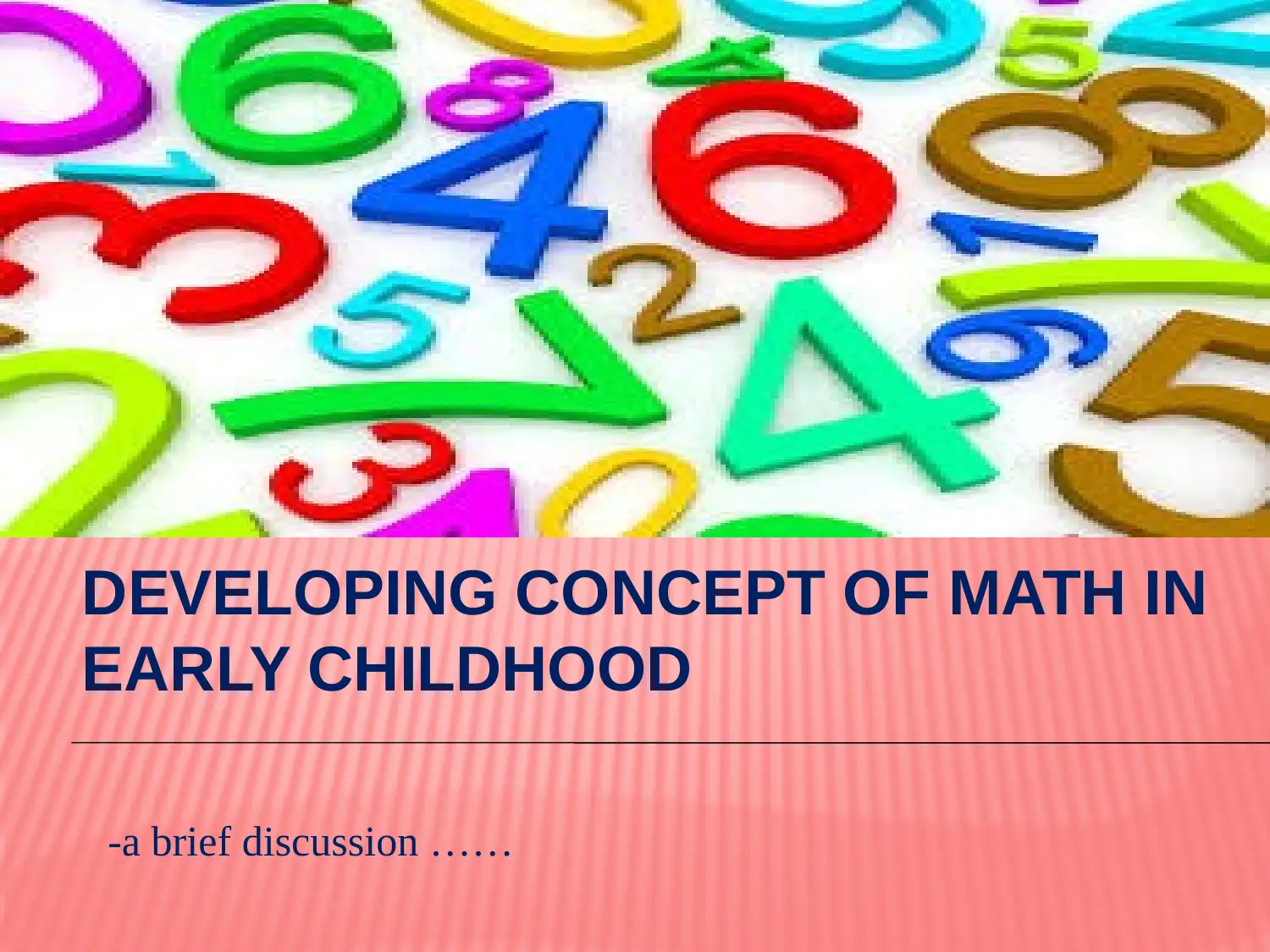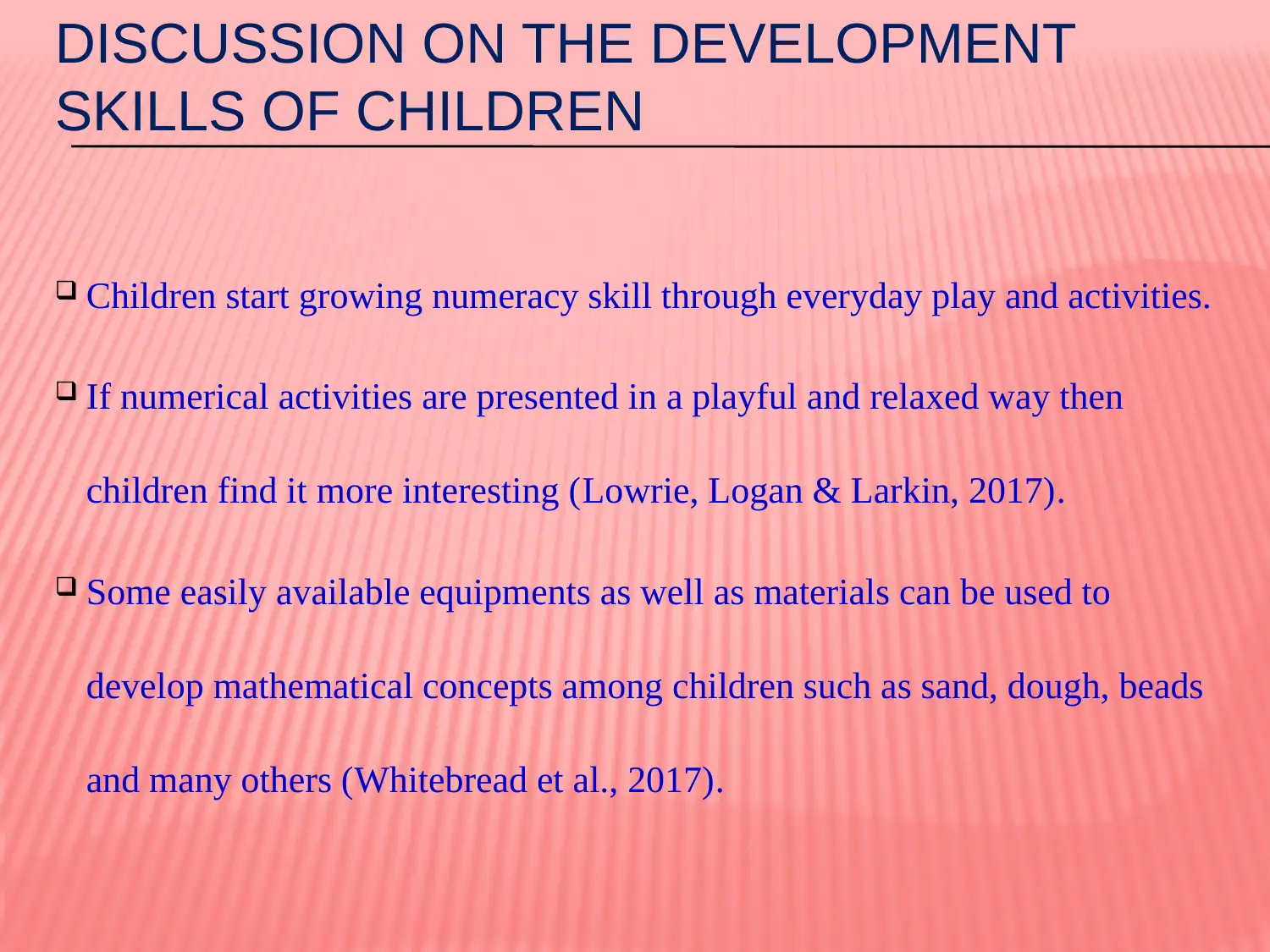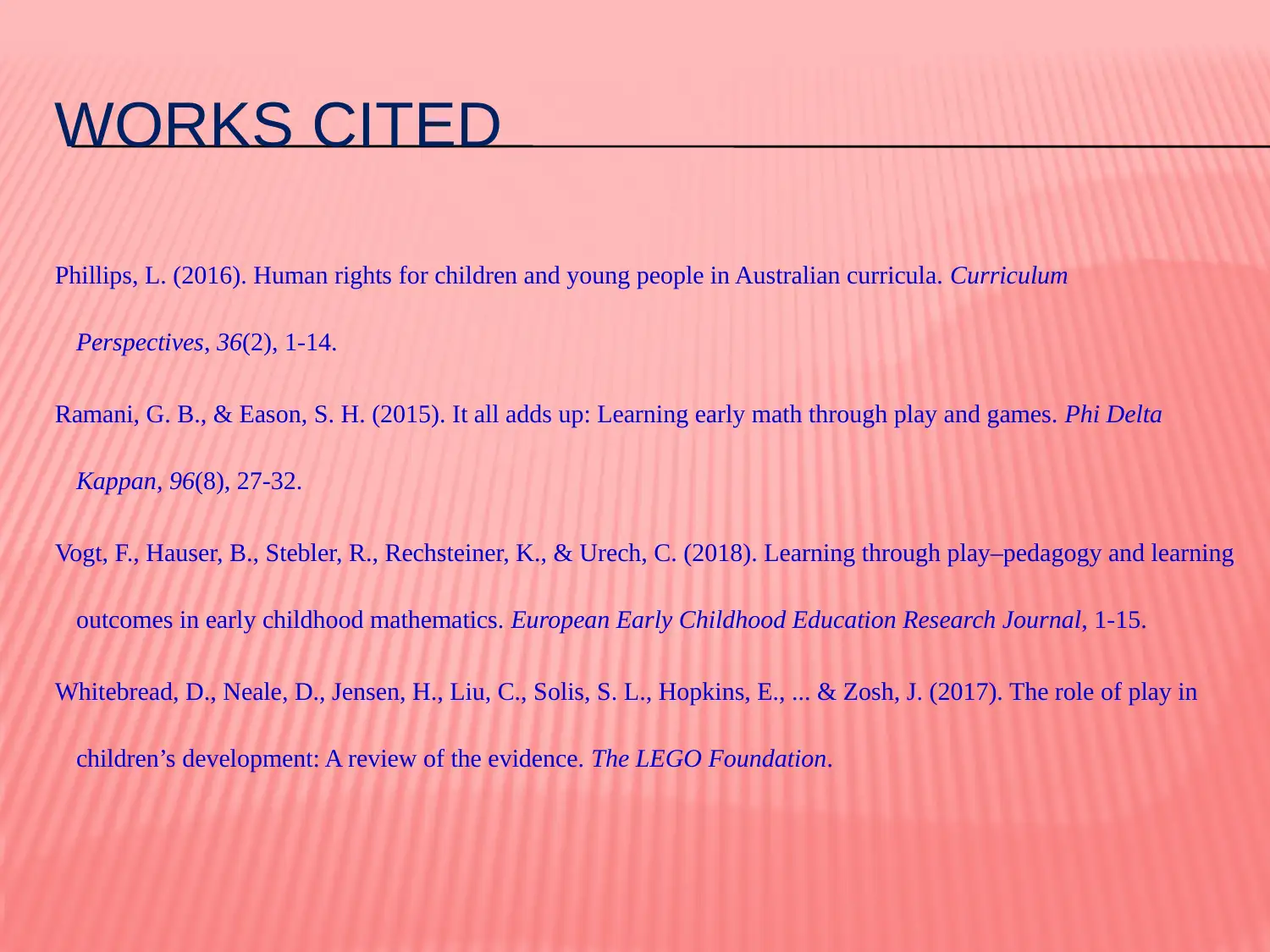Exploring Math Concepts in Early Childhood Education: EYLF Framework
VerifiedAdded on 2023/04/21
|8
|768
|184
Presentation
AI Summary
This presentation explores the development of mathematical concepts in early childhood education, specifically focusing on children aged 0-5 years. It introduces the importance of early childhood as a critical learning stage and highlights innovative programs designed to build numeracy skills. The presentation centers on the Early Years Learning Framework (EYLF) and its three inter-related elements: principles, practices, and learning outcomes. It emphasizes the use of various playful and exciting activities, such as counting with beads, colorful paper cut-outs, and fun games, to help children develop math skills. The presentation discusses how everyday play and readily available materials like sand and dough can be utilized to develop mathematical concepts. The effectiveness of EYLF in supporting mathematical skill development in a playful manner is also highlighted. The presentation concludes by emphasizing the role of educators in fostering a child's interest in learning through engaging methods. The work is referenced with citations from various researchers like Bierman, Black, Lindgren, Lowrie, Phillips, Ramani, Vogt, Whitebread, and others.
1 out of 8














![[object Object]](/_next/static/media/star-bottom.7253800d.svg)